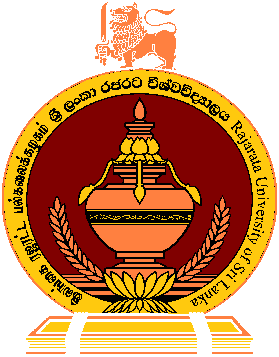General Guidelines
Language : English / Sinhala* (All articles written in Sinhala need to be submitted
in English abstract)
Font : English – Times New Roman, Sinhala – FMAbhaya
Font Size : Heading – 16/Bold, Subheading – 14/Bold, Content – 12
Word Limit : Words: 4000 – 5000
- Research manuscripts should comprise:
- Front section: Title, Author list, Affiliations, Abstract, Keywords
- Research manuscript sections: Introduction, Materials and Methods, Results, Discussion, Conclusions.
- Back section: Acknowledgments, References, Appendix.
Front Section
- Title: The title of the manuscript should be concise, specific, and relevant.
- Author List and Affiliations: Must provide Authors’ full first and last names. One author should be designated as the corresponding author, and his or her email address and other details should be included at the end of the affiliation section.
- Abstract: A single paragraph of about 250 – 300 words maximum. The abstract should be an objective representation of the research. The abstract should give a pertinent overview of the work. We strongly encourage authors to use the following style of structured abstracts, but without headings: (1) Background: Place the question addressed in a broad context and highlight the purpose of the study; (2) Methods: briefly describe the main methods or treatments applied; (3) Results: summarize the article’s main findings; (4) Conclusions: indicate the main conclusions or interpretations.
- Keywords: Three to five pertinent keywords need to be added after the abstract
Research Manuscript Sections
- Introduction: The introduction should briefly place the study in a broad context and highlight why it is essential. The related literature of the study needs to be arranged with key citations. The work’s purpose needs to be incorporated at the end of the introduction.
- Materials and Methods: This section needs to incorporate the study area, data types, data collection method, and data analysis method. Authors need to use equations and flowcharts to explain the methods of the study with citations. The already published/established methods can be briefly described and appropriately cited, while new methods and protocols should be described.
- Results: Provide a concise and precise description of the main results, their interpretation, and the conclusions drawn. The tables and figures need to be described in the main text.
- Discussion: This section can be combined with the result section. Authors should discuss the results and how they can be interpreted from the perspective of previous studies and the working hypotheses. The findings and their implications should be discussed in the broadest context possible. Future research directions and limitations may also be highlighted.
- Conclusions and recommendation: This section is not mandatory but can be added to the manuscript if the discussion is unusually long or complex.
Back Section
- Acknowledgments: In this section, authors can acknowledge any support given. This may include administrative and technical support or donations.
- References: References must be in APA style (including table captions and figure legends) and listed individually at the end of the manuscript. We recommend using a bibliography software package, such as Mendeley, EndNote, Reference Manager, or Zotero, to avoid typing mistakes and duplicated references.
- Appendix (Optional): Supplementary data, compute code, tables, and figures can be included in this section.
Preparing Figures and Tables
- All Figures and Tables should be cited in the main text as Figure 1, Table 1, etc.
- All Figures need high resolution with 300 dpi. The JPEG format is highly recommended.
- All Figures and Tables should be inserted into the main text close to their first citation and must be numbered following their number of appearances (Figure 1, Figure 2, Table 1, etc.).
- All Figures, Schemes, and Tables should have a short explanatory title and caption.
- Authors should use the Table option of Microsoft Word to create tables. All table columns should have an explanatory heading. Smaller fonts may be used in larger tables, but not less than eight in size (8pt).
- Authors are encouraged to prepare figures and schemes in color (RGB at 8-bit per channel).
Important Dates
Date of Submission: Any Time
Date of Online Version of the Article: Within one week after acceptance
Date of Launch (Hardcopy): 30th June 2025 (Issue I) and 31st December (Issue II)
Articles should be sent to:
Email address: samodhana@ssh.rjt.ac.lk
Postal address: Editor-in-Chief, Samodhana Journal,Faculty of Social Sciences and Humanities , Rajarata University of Sri Lanka, Mihintale



